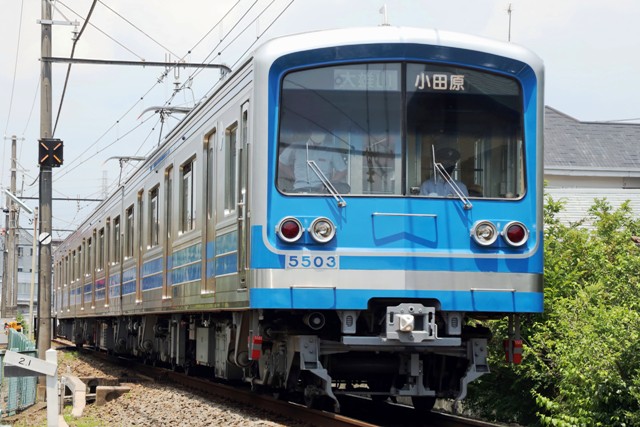 |
| Set 8629 of the EMU Tokyu 8500 series (May, 2020) |
A long-lived train, the EMU Tokyu 8500 series, is decreasing its number from Tokyu Railways. Currently, only eight sets, 80 cars in total, are operated on the Den-en-toshi line. They are set 8619, 8622, 8628, 8630, 8631, 8635, 8636 and 8637. Set 8637 only has blue-colored stripes; meanwhile, the other sets have red-colored stripes on their bodies.
The 8500 series was launched in 1975, when the Tokyu Den-en-toshi line trains started to be directly operated onto the subway Hanzomon line. It was, then, introduced onto the Tokyu Oimachi line as well in 1986. 400 cars in total were built by Tokyu Sharyo, but all the 8500 series are currently operated on the Den-en-toshi line only.
The technical specification of the 8500 series is almost the same as that of the older 8000 series, but the outer design of the 8500 and the 8000 series is slightly different. For instance, the newer 8500 series has three displays on the front; meanwhile, the older 8000 series has one display only. The electric motor of the 8500 series is traditional direct current compound. The electric control system is old field chopper. The stainless-steel bodies with corrugated structures are old-fashioned, but very stout and trouble-proof. The growling running sound of the 8500 series is very nostalgic and definitely my favorite. It's exactly the sound of trains in the 1970's.
The 8500 series is an endangered species of trains on the Den-en-toshi line. Please hurry up and take their photos before it's too late!
 |
| Set 8637 of the EMU Tokyu 8500 series (August, 2012) |













